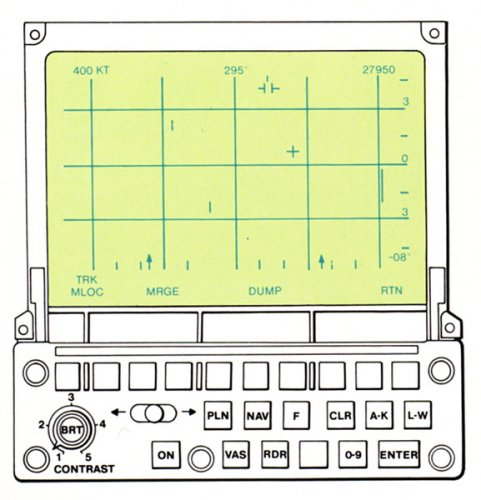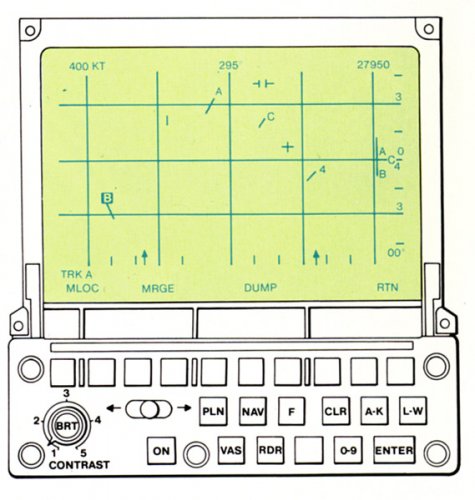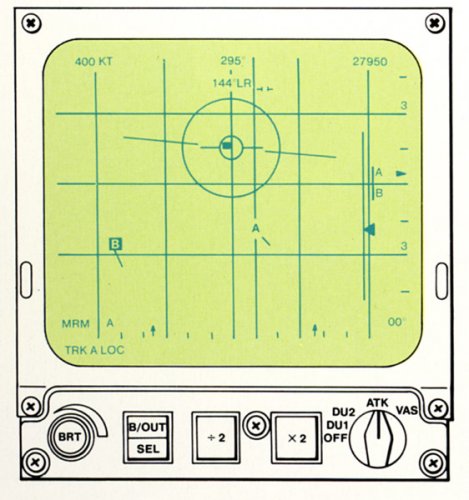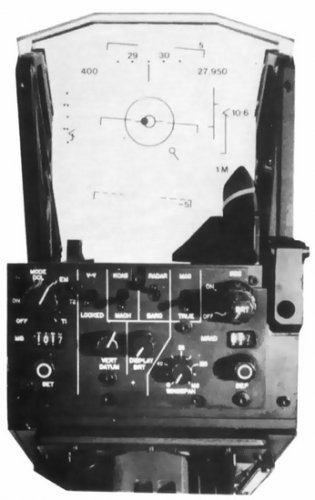- Joined
- 27 December 2005
- Messages
- 16,924
- Reaction score
- 21,798
Placeholder for thread. Will post Foxhunter article later today.




flogger-23 said:does the audi tornado have the same foxhounter radar and avionics as the UK, or are the saudi one downgraded??
Source: Justin Reuter Tornado F3 - 25 Years of Air DefenceWe old F-4 mafia were looking forward to the new technology that the "Foxhunter" was reportedly offering. It had a magic method of giving range in Pulse Doppler called Frequency Modulated Interrupted Continuous Wave (FMICW). It soon became known by a slightly different nomenclature, however - F*M*I*C*W*! Rumours had reached all of us about the state of the F2 radar, more specifically, the lack of one. In fact, stories in the aviation press had started to label the radar in the F2 as the "Blue Circle" (after Blue Circle Cement), due to the fact, that in order to maintain the aircraft's centre of gravity, it was thought that all the F2s were required to carry "ballast" where the radar should have been.
Whilst this was partially correct, most of the F2s were fitted with a radar, the" Y" List AI-24. This was a pre-production radar, which was fitted to the
aircraft to at least give the new crews an insight of what to expect! What we saw did not impress us very much. I would go as far as to say we were all shocked - if this was what we were going to get, then things needed to improve, a great deal. GEC Marconi made the AI-24; their previous adventure into Al radars had last been the Lightning AI-23 pulse radar!
There were other issues with the aircraft of course, but I will not dwell on those here. Suffice to say, action was instigated in order to attempt to rectify the situation. We were already due to get the first scheduled in-squadron version of the radar, the "W" List (I never did get an answer to why the "W" List came after the "Y" List). This duly came, and went, to be replaced by the "Z" List radar. This was to be the final version, which met all the requirements of the initial specification, supposedly! When it became clear that this was not the case, the Central Trials and Tactics Organisation, the predecessor to the Air Warfare Centre, instigated a trial, the purpose of which was to ascertain the deficiencies of the AI- 24, and associated systems. "Trial Bunbury" was conducted at RAF Coningsby. It involved a large number of sorties, consisting of relatively benign 1 v 1 intercepts, to Air Combat Manoeuvring sorties and large Composite Air Operations packages.
The results of this trial led directly to a "new" contract being signed with British Aerospace (BAE Systems as it is now known). This was known as the 395 FD Contract, meaning it was for £395 million and was the "Final Development". This would seek to improve the radar's capabilities in stages - first would come the Stage 1 variant, then the Stage 2, with improvements subsequently added to each, which were to meet the stated requirements. Nothing ever goes according to plan, and indeed this can be said of anything to do with the "Foxhunter". Over the following ten years other contracts were written, or hands shaken, leading to the Stage 2G*, Stage 2H and finally the Stage 3. The "G" stood for the incorporation of the modifications added during Operation GRANBY - the first Gulf War.
During this period, the F2 was reaching the end of its useful life. As the F3 started to trickle into service, the F2s were delivered to St Athan for storage, neverto be seen again - at least not totally intact. On one occasion, upon giving the F700 to the engineers at St Athan, we were told that the said F2 had 300 hours on it, but had consumed 9.9 Fl (Fl is Fatigue Index, w ith an aircraft usually having a total lifespan of 100 Fl). We pretended to be shocked, but really had to laugh when he informed us that a GR1 had just been delivered for upgrade - it had 1000 hours on the clock, and had used 4.5 Fl. Need I say any more?!
Anyway, I digress. Now operating the mighty F3, there was nothing stopping us - oh, hold on, the radar! To say that the OC o f the F3 Operational Evaluation Unit (OEU) at the time was a genius would be an understatement. The debt the RAF and F3 community owes to him is immense.
Under his leadership, the OEU was able to start a programme of trials, that were, eventually, able to guide industry and the MOD Procurement Executive, (which was the predecessor to the Defence Procurement Agency, and then the Defence Equipment and Support Organisation) into making the appropriate decisions and modifications required. An excellent working relationship was established with GEC Marconi and British Aerospace, with a permanent detachment of personnel from these companies established at the OEU.
Over a number of years, personnel came and went. In fact, Ian Ansell, aka "Ferret", came and went a number of times. Ferret worked for GEC at the time and is a legend within the F3 radar community, and rightly so. Along with the then Gp Capt Development, he was responsible for kick-starting the "Foxhunter" recovery. On my arrival at the OEU I was briefed by the OC that "if I saw Ferret plugged into the side of an F3 with his Psion computer, I was to give him a kick in the butt, as he was probably changing the functionality of the Radar Data Processor, or something else nefarious". Over the years, the OEU had many dedicated aircrew, all worked extremely hard to fix a number of "issues", and help to make a "silk purse out of a sow's ear".
There is no doubt that the groundcrew, specifically the avionics specialists, the "fairies", played a significant part in the "Foxhunter" story. Their dedication in fixing the vagaries of the radar were appreciated by all those aircrew that came back to base declaring "ZululO "(the serviceability brevity code for "radar unserviceable"). Although, I suspect, that some aircrews'debriefs were viewed w ith suspicion, this loyal ban'd of fairies would nod sagely, and endeavour to push "**** uphill", in order to give the next wave a serviceable beast!
story ends, some 26 years after the RAF took delivery o f the first "Foxhunter" radar. It has seen several iterations, culminating in the Stage 3 variant. There have been frustrations along the way. Ultimately, however, those that have had the privilege to operate the "Foxhunter", know that, if handled in the right manner, it gave tremendous service. Today's radars, w ith all the new modern Micro Mechanical Electro Systems and other technologies available, should be streets ahead of the"Foxhunter", however, when it worked, it could give many of these systems a run for their money.
At the end of its life, when operated efficiently, the "Foxhunter" was capable of holding its own amongst other fighters, operating modern Active Electronically Scanned Array/Phased-Array radars, whilst supporting active air-to-air missiles, in a high threat environment - as its last visit to Exercise Red Flag ably demonstrated. Will it be remembered as a "classic"? I doubt it, but it will certainly be remembered.
Sqn Ldr Colin "Wiki" Wills
A fantastic product ahead of its time AI24Foxhunter Radar
AI24 Foxhunter Radar
Development
In the early 1960s, RRE (Radar Research Establishment) Great Malvern and Elliott began research into a new type of radar they called FMICW (Frequency Modulated Interrupted Continuous Wave), with possible application in two areas; AI (airborne interception) and AEW (airborne early warning). In a frequency modulated continuous wave (FMCW) radar a continuous wave is smoothly varied in frequency over time. The frequency of received radar signals is then compared with that being currently emitted in the receiver. The combination of the two waveforms gives frequency-triplets which can be decoded to give target range and range rate. However, as radar energy emission is continuous, it needs separate transmit and receive antennas which is not practical in airborne applications.
FMICW complicates this by periodically interrupting the waveform to allow a single antenna to both transmit and receive. This introduces additional complexities to the design over FMCW via PRF intervals and harmonics. However it seemed a method to allow good lookdown detection capability and be a promising alternative to the US AMTI solution used in the E-2C Hawkeye.
In 1963 studies started for a naval AEW aircraft which became the Blackburn P.139. By 1965, FMICW radar technology was looking very promising and the P.139 had settled on an FASS (fore-and-aft scanner system) radar with inverse-cassegrain antennas using FMICW. However, in 1965 the UK carrier fleet was axed and the P.139 consigned to history.
Work continued in Britain on FMICW despite these setbacks. In 1967 a prototype radar flew in a Canberra. A prototype of an FMICW AEW radar was under construction in 1971 but was cancelled on cost grounds, and also because the US was building its new E-3 AWACS with a High PRF Pulse Doppler radar, which worked on slightly different principles to the UK FMICW approach.
By 1967 Britain was formulating the Operation Requirement for the MRCA, and hit upon the idea of an air intercept variant to replace the Phantom in the air defence role. The Tornado ADV (Air Defence Variant) requirement was formulated as long ago as 1969. However, the ADV version was not considered a high priority in the early stages, as the RAF was only just receiving brand new F-4M Phantoms, and a replacement wouldn’t be needed until the early 1980s. Indeed, the contract for AI24 wasn’t signed until 1976, though Marconi had flown test hardware prior to this.
Marconi-Elliott were given responsibility for developing the AI24 radar for the ADV (incidently, the “Foxhunter” name was never official; the designation for the radar was just AI24) with Ferranti supplying some components. Requirements for AI24 were ambitious. ADV was expected to intercept Soviet bombers and cruise missiles at extended distances, at high and low altitudes. Detection range for a typical bomber was to exceed 100 nautical miles (185km) and the radar was expected to track multiple targets simultaneously. Emphasis was placed on ECCM capabilities as the intended targets were assumed to use powerful ECM systems. Lookdown detection ranges were expected to be as great as possible.
In order to meet these tough requirements, Marconi-Elliott decided to base AI 24 on their longstanding work on FMICW radars, which had seemed to offer strong lookdown performance and long range detection, and, crucially, was thought to offer good resistance to ECM.
The US meanwhile had moved on from AMTI to modern pulse-Doppler radars. The F-14’s AWG-9 was a High PRF pulse Doppler radar with FM ranging for long range target detection. Marconi’s own FMICW concept was largely a version of the same concept, the distinguishing features of FMICW being extremely high PRFs, very high duty cycle (near 50%), and the use of a single range gate; that is, rather than dividing the interpulse receiving period into individual range cells corresponding to targets at different ranges and analysing them separately, a single sample was taken of the whole interpulse region. This integrated the returns (and hence clutter) from many range cells into a single range gate. The magnitude of the ground clutter is therefore typically high, 80-90dB above thermal noise, requiring an exceptionally good dynamic range signal processing chain, extremely low sidelobe levels and a very pure transmitted signal to allow successful target detection. However, it simplified the processing as only a single set of Doppler filters needed to be formed, rather than multiple filters for each range gate. Early FMICW radars used analogue processing; for AI24 Marconi used digital signal processing.
A fibreglass based, twist-cassegrain antenna was selected, for two main reasons. Firstly, very low sidelobe levels were thought to achievable, which helped in ECM resistance and was also important as outlined above for FMICW performance. Additionally, the resulting antenna was extremely lightweight (just 3lb!), which reduced inertia and allowed rapid scanning, which would be helpful in track-while-scan mode.
Following early trials of test radars in a Canberra from 1975, and from 1976 a Buccaneer (XX897) assigned to RRE, the first flight of a Foxhunter in a Tornado was made on 17 June 1981. The original forecast in-service date for the Foxhunter radar was 1982. By 1983, the “B” version was flying in Tornado ZA283, but production radars were still two years away.
The first batch of 18 Tornado F2s were delivered without radars, and had to be fitted with ballast in the nose to compensate for the weight of the missing radar. This lead to the now famous “Blue Circle radar” joke (Blue Circle being a British manufacturer of cement, and handily following the pattern of British radar designations like Blue Fox, Blue Vixen etc). Foxhunter did not enter service until 1985 and then only an interim standard version that didn’t meet requirements, despite a 63% increase in development costs.
Not all the problems were of Marconi’s making. Part of the problem was the lack of experience in fighter radars in Britain. The last indigenous fighter radar had been the Ferranti AI23 for the Lightning, but while Ferranti had built the US AWG-10 pulse-Doppler radar under license, Marconi had comparable recent experience to draw on. It was still expected to produce radar to roughly equal the AWG-9, the most powerful and expensive fighter radar in the world, at lower cost. Yet the actual contract was an old-fashioned “cost plus” contract where the government agreed to pay all costs plus a percentage profit, rather than a fixed price, which some industry observers feel contributed to the late service entry and problems encountered.
In some respects, the early Foxhunter was actually slightly inferior to the AWG-12 radar on the British F-4 Phantom II. No tail-chase programming was initially requested, and this had to be added later, as did close combat modes. A 20 target TWS capability was required, but was optimised for bomber raid assessment and targeting, not manoeuvring combat. Whilst it worked well in testing against drone targets, in service it proved unable to correctly track multiple targets making turns and moving in less predictable ways. Allegedly, it had problems with detecting lower RCS targets in clutter, and Hawks used in air training with the Tornado F3 were fitted with radar repeater pods.
Marconi and the UK government agreed a multi-year plan to bring Foxhunter up to an acceptable standard. By 1988, “Stage 1” radars were introduced into production which fully met the basic requirements of the RAF. These were to be followed by the definitive “Stage 2” radars, with new programmable digital processors. For the Gulf War in 1991, an emergency “Stage 1+” was introduced, to give some of the “Stage 2” capabilities to the “Stage 1” radar, but crucially this did not include the vital NCTR (Non Cooperative Target Recognition) mode as this feature required the new upgraded processors of "Stage 2”. The lack of NCTR relegated the F3 to a secondary air defence role well behind the front line. This was introduced with the “Stage 2G” in 1996, and further refined since then.
Since Stage 2 there have been continuous programmes of improvement for the Foxhunter, which are detailed later in the “Variants” section. The latest standard of AI24 radar supports the AIM-120 AMRAAM, and finally lives up to the original promise of this troubled radar design.
